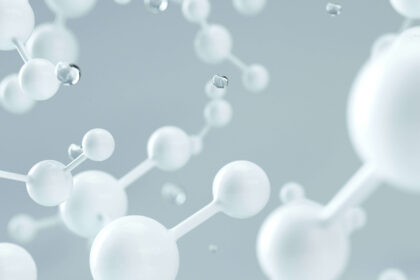What Is The Hair Shaft
The hair shaft is the hair that can be seen above the skin and consists of 2-3 layers. [1] [2] [3]
Even if you have never heard the words “hair shaft” I promise you that you know it very well. When you’re bored you play with it, you’ve burnt yourself while flat ironing it, and you’ve probably even gotten it stuck in something.
The layers of the hair shaft include:
The Cuticle
What is the cuticle
The hair cuticle is the transparent protective layer that we can feel. It is characterized by overlapping cells in a scale-like formation on the outer layer of the hair fiber. Cuticles resemble the scales on a snake.
What the cuticle does for the hair strand
When your hair becomes overly dry, frizzes and tangles a lot, this indicates the health of your cuticles. When healthy cuticles lay flat, your hair tends to be softer, smoother, and bouncier. Cuticles also reflect light which gives a healthy shiny glow to your locks.
When raised, hair cuticles become an entryway into the hair strand. In some cases, the cuticle layer can be missing or have holes in it for various reasons. When permanent hair colors are used, they must penetrate this layer for a lasting effect. After the color process, healthy flat cuticles aid in color retention.
How cuticles become damaged
The hair cuticle tends to become worn or damaged from the use of heat, combing, brushing, washing, chemical processing, other forms of manipulation, etc. This is likely to lead to cracked, chipped, or missing cuticles. Don’t worry “normal” wear and tear from daily hair care activities is not much to be too concerned about, “excessive” force, or improper use of hair care, styling methods, and chemical processing tends to lead to irreparable damage.
You may be thinking “But this is all so confusing! What am I supposed to do with my hair if I’m just going to damage it by taking care of it?” It’s okay, we understand your frustration. To gain some clarity and learn more about hair care you may find some of the following posts useful:
The Cortex
What the cortex does for the hair strand
The cortex is shielded by the Cuticle in healthy hair strands and contributes to a majority of the hair strand’s overall strength. The cortex is identified as the middle layer of hair which makes up most of the hair fiber and is mainly composed of a protein known as “Keratin”. The presence of Keratin in the cortex gives hair its strength, structure, and texture.
Where does Keratin come from
Nutrients we consume such as protein, biotin, zinc, and vitamin A help our bodies produce Keratin. A healthy hair strand can be composed of mostly Keratin. Moisture is also stored in the cortex layer of the hair.
Hair color in the cortex
The cortex is also home to the color pigment known as “Melanin” which gives hair and skin its natural color. Special cells within the hair bulb called melanocytes make the melanin pigment. Chemical processes such as relaxers, and hair coloring must penetrate the cuticle to make structural changes to the cortex.
What Determines Hair Color
Your hair color is determined by the amount of melanin in your hair. There are two types of melanin found in hair, eumelanin, and pheomelanin.
Eumelanin – gives hair dark colors
Pheomelanin – gives hair light colors
- Black Hair – Abundance of eumelanin
- Brown – Moderate amount of eumelanin
- Blond – Very little eumelanin
- Strawberry Blond – a mixture of brown eumelanin and pheomelanin
- Red – Mostly pheomelanin with a little eumelanin
The Medulla
The medulla is surrounded by the cortex. It is identified as the innermost layer of the hair fiber however, it is only present in thicker coarser hair types. The medulla is loosely packed and consists of air pockets which are said to aid in temperature regulation.
How the three layers of the hair strand are formed
The layers are formed during the growth phase of hair called the anagen phase. During the growth phase, special stem cells divide rapidly in an upward motion, pushing your hair through what is known as the hair follicle.
Why hair strands are hard/tough
After the cell division process, mature cells go through a hardening process called keratinization which results in their deaths. By no means does “death” mean weak, on one strand of hair these dead keratinized layers are strong enough to hold up to 100 grams of weight, except when wet.
Why hair is weaker when wet
Water breaks bonds in your hair called hydrogen bonds which result in hair becoming more vulnerable to damage when wet.
Why the shape of hair can be changed with heat
Hydrogen bonds can also be thanked for making the styling of your luscious locks possible, as heat also breaks them. After drying or cooling, hydrogen bonds reform allowing your hair to take on a new shape if molded to do so. The natural strength also returns to your strands after drying or cooling. [4] [5]
Summary
In summary, the hair shaft consists of three layers known as the cuticle, cortex, and medulla. These layers are comprised of a hard protein known as keratin. Keratin gives hair its strength and structure, however, hydrogen bonds in the hair can be broken by heat and water which may temporarily weaken the hair shaft.
Fascinating, isn’t it?
There is so much more going on with your hair strands than the eyes can see, feed your curiosity, and take a peek beneath the skin.








